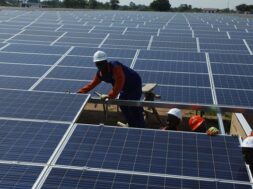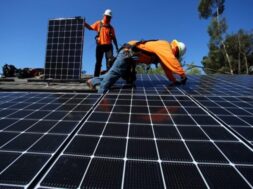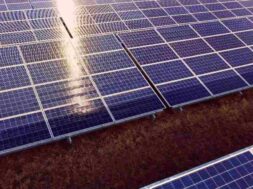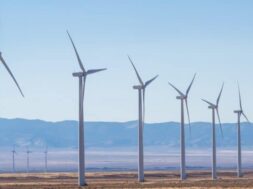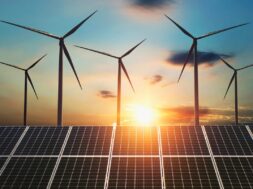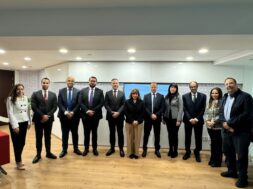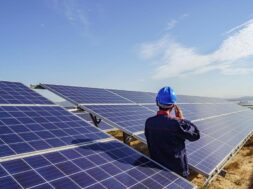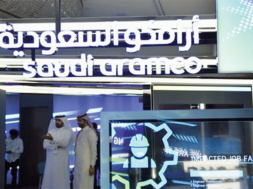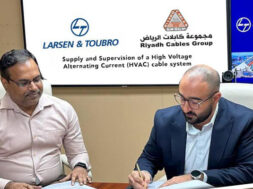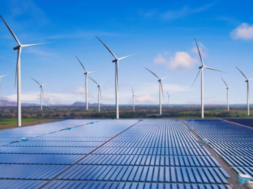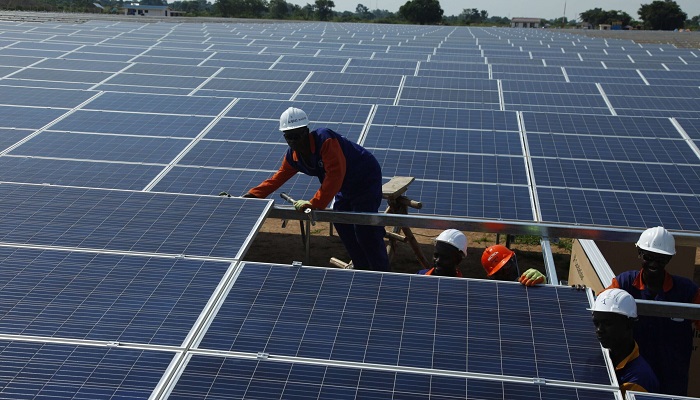
The Coega Development Corporation is embracing solar energy in its Special Economic Zone, to ensure a steady power supply to businesses in the face of nationwide load shedding.
Power cuts, or load shedding, have increased in South Africa over the past month, posing significant challenges to small businesses – which account for a third of the country’s gross domestic product. For global investors watching South Africa, increased power cuts may be a deterrent to injecting capital into the economy, but there are companies within the country doing their best to alleviate load shedding and reassure investors.
South Africa, the most industrialised country on the African continent, has faced energy supply issues for many years, but the situation has recently worsened with President Cyril Ramaphosa earlier this year calling the situation a “national state of disaster”. The energy crisis has done untold damage to the country and is an existential threat to businesses and the economy. Declaring such a state was a move to ensure that the government will come up with “practical measures” to assist businesses and secure uninterrupted power supplies, the president said.
The power cuts cost the economy an estimated R1bn ($56m) a day, said the Minister of Mineral Resources and Energy, Gwede Mantashe, at the annual Mining Indaba in Cape Town in February this year. Furthermore, the World Bank estimates that South Africa’s economy lost $24bn in 2022 because of power cuts.
In response to the worsening power outages, President Ramaphosa has created two new ministries. One of them, the Ministry of Electricity, will work with state-owned power supplier Eksom to alleviate the crisis. The other is the Ministry for Planning, Monitoring and Evaluation, which the president said was “to focus greater attention on the performance of government”.
Solving power shortages with solar panels
Meanwhile, other entities within the country are looking for their own solutions to the problem to ensure that businesses can still operate unhindered. The Coega Development Corporation, operator and developer of the 9003-hectare (ha) Coega Special Economic Zone (SEZ) and 206ha Nelson Mandela Bay Logistics Park (NMBLP) has begun fitting out buildings in its SEZ with solar panels.
Currently, the dominant energy source in South Africa is coal – meeting an estimated 80% of the country’s energy demand, according to the US International Trade Agency. Africa has “excellent conditions” for solar power, according to the World Bank’s Global Solar Atlas – yet only 9% of the continent’s energy supply comes from renewables.
Even though Africa’s renewable sector lags behind global averages, it is growing; Statista found that solar capacity grew 13% between 2019 and 2020.
The Coega Development Corporation is charging ahead with its own plan to increase solar capacity in the country. Further to this, to support investors, the Corporation offers valuable incentives to tenants located within the Coega SEZ. Incentives include a reduced corporate tax rate of 15% compared with the standard corporate tax rate of 28%.
“Currently the plan is to substitute Eskom power with solar and provide a greener and more economical source of energy,” says Thandeka Maphazi, Coega’s business development manager for special projects.
The Coega Solar Rooftop Project (CSRP), in its pilot phase, will fit five buildings within Coega SEZ and the NMBLP with, cumulatively, 4.5MW of solar PV panels. The second phase will expand to include 20 buildings.
So far, the first building has been fitted, and the roof assessments and designs have been approved for the remaining four buildings, Maphazi says. Phase two of the solar PV installations is at the planning stage and is aiming for a capacity of 20MW.
Those within the country know that the expansion of South Africa’s energy generation capacity is crucial for attracting foreign direct investment.
“We are encouraged by the President’s support for industries to participate in energy generation. In terms of rooftop solar, Coega has been proactive in continuing with the rollout efforts of the Solar Rooftop Project,” says Telly Chauke, Coega’s chief sustainability officer. The CSRP is implemented to allow energy flexibility and ensure energy security for Coega tenants, especially energy-intensive users.
“Moreover, a bigger view as an organisation is to implement the Coega Energy Strategy to guide future energy investments and reduce Coega’s carbon footprint, ultimately contributing to South Africa’s emissions reduction ambition and efforts to mitigate climate change, as the country charts its pathway to net-zero carbon by 2050.”
The Coega Development Corporation energy strategy positions the Coega SEZ to secure the confidence of government, investors and the broader stakeholder community concerning the future energy planning implemented by Coega over the next 20 years.
The strategy identifies available options to manage the energy supply, energy demand, efficient usage and investment in current and new energy technologies in a manner that is environmentally friendly, institutionally sound, socially acceptable and cost effective, utilising the best mix of energy supply and demand options. Additional short-term interventions include a 24-hour load curtailment schedule and the development of solar farms in the Coega SEZ and NMBLP, due to land availability, electrical distribution networks, ability to transmit electricity to external customers via a wheeling agreement, and excellent solar and wind resources.
